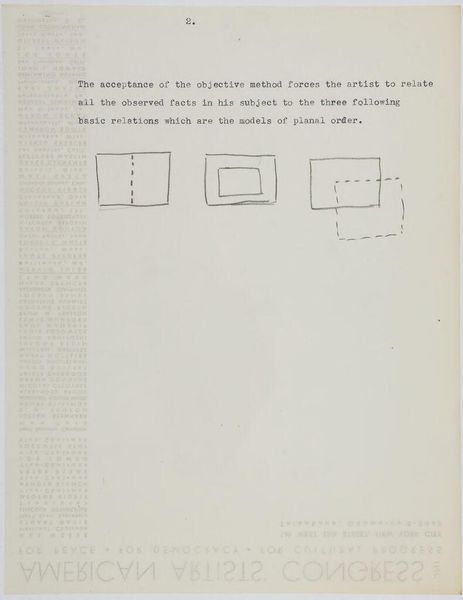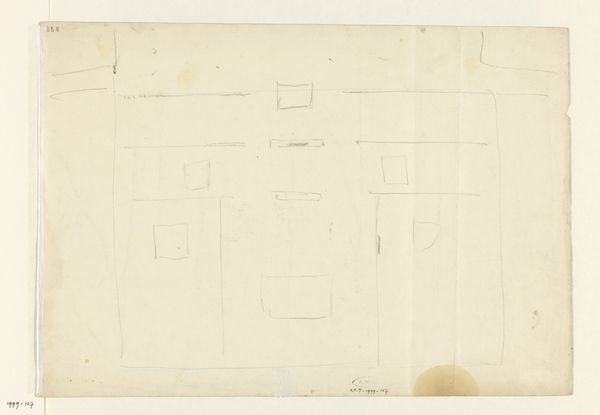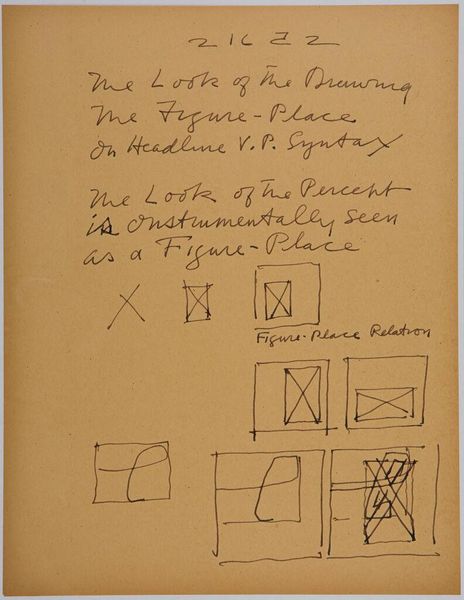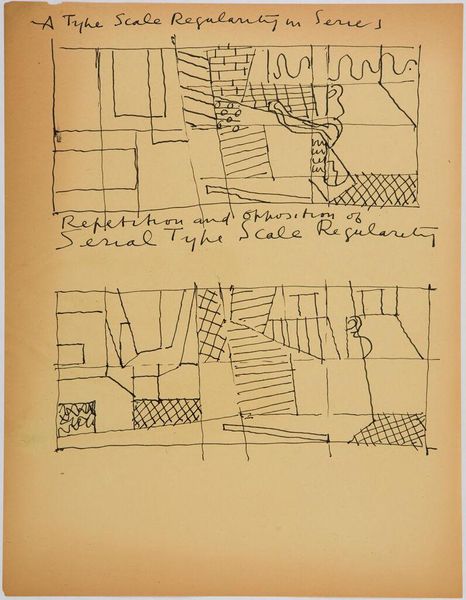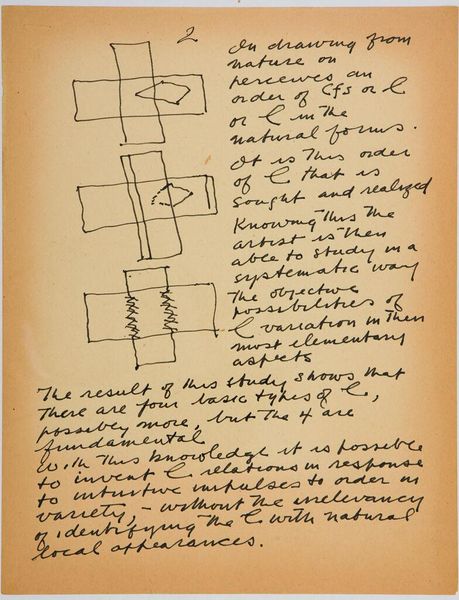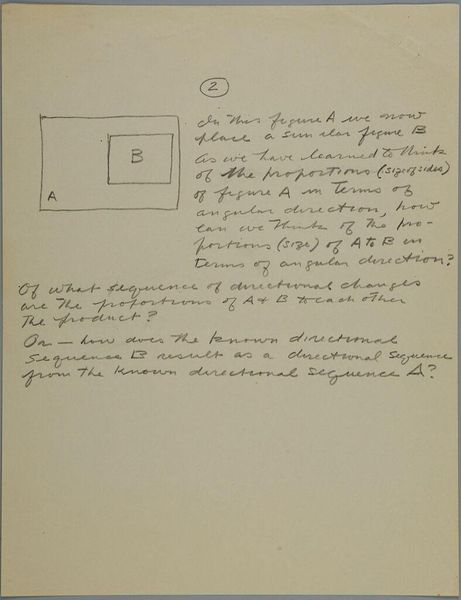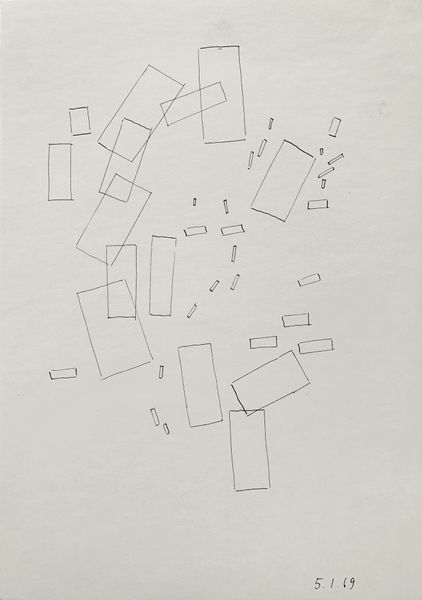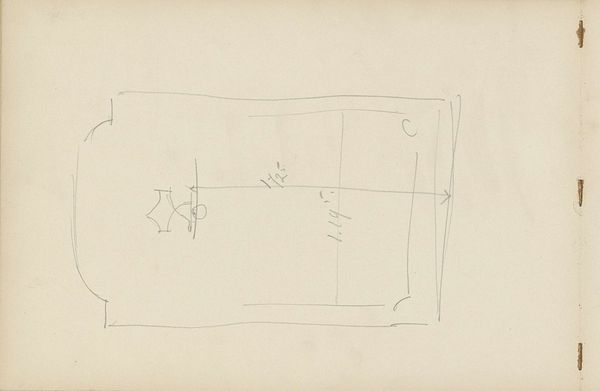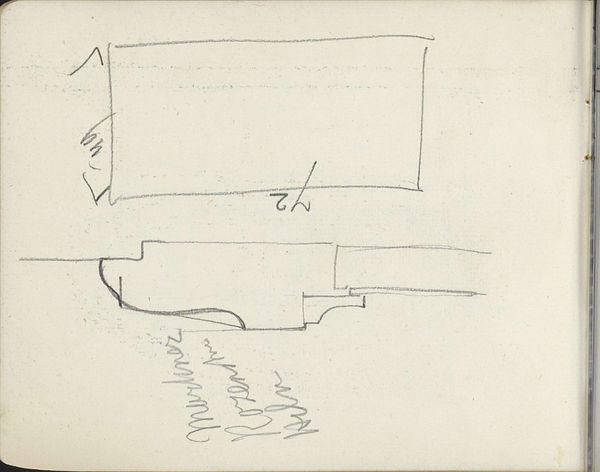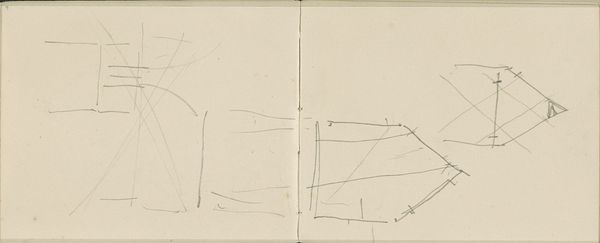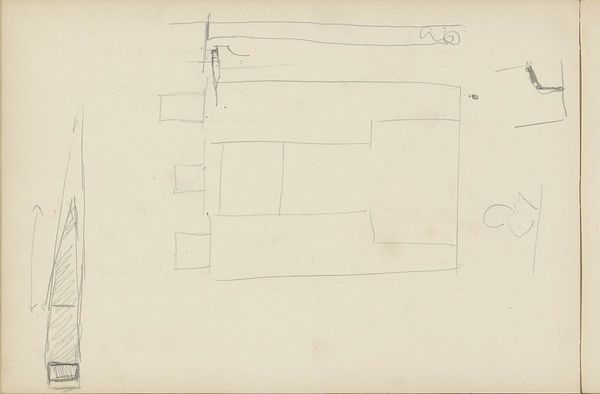
drawing, print, paper
#
drawing
#
de-stijl
# print
#
paper
#
text
#
geometric
#
abstraction
Dimensions: 20.5 x 37.5 cm
Copyright: Public domain
Curator: Looking at this paper, printed with what appears to be white ink, the array of squares and rectangles makes me think of urban planning. Editor: That's interesting because what we have here is Theo van Doesburg's "Template for the Long House ornament edge," created in 1917. It's a drawing, also considered a print, and, seeing these forms, it seems connected with the De Stijl movement's ideals. How does that context inform your reading? Curator: The social context of De Stijl and its utopian ambitions are really critical to understand this work. There was this vision to totally reshape society after the devastation of WWI. We can read the straight lines, geometric shapes, the absolute flatness as this drive for progress, for something universally comprehensible. And gender definitely plays a role too – think about the emphasis on supposedly objective, ‘masculine’ rationality pushing back against the decorative and ‘feminine’ excesses of art nouveau. Editor: The 'template' in the title makes me think practically, about the work's intended use and how that fits in with larger systems of making, of consumption even. The use of a print –a reproducible medium—reinforces this idea, does it not? I find the material reduction in making the piece interesting, even as its visual components may lend themselves to broader implications, be they cultural, political, or social. Curator: Absolutely. But what I am struck by is how that template—intended for application in an architectural or craft context – contains an attempt to dismantle artistic hierarchies altogether, reflecting broader egalitarian ambitions. Thinking about that intersection of the private sphere of the 'Long House' with De Stijl’s wider societal ambitions really helps connect how its ideology shaped its form. Editor: For me, seeing the hand of the artist present here through his inscription balances those ideals against the realities of making this particular artwork in that time. I think focusing on the balance of that hand and those ideals yields the most thoughtful reading. Curator: Ultimately, Doesburg's work reminds us how art and architecture intertwined in early modernist ideals, suggesting we consider those same intersections within our contemporary moment. Editor: Yes, a closer look at materiality can open discussions that speak more broadly about consumption, production, and historical intention.
Comments
No comments
Be the first to comment and join the conversation on the ultimate creative platform.

